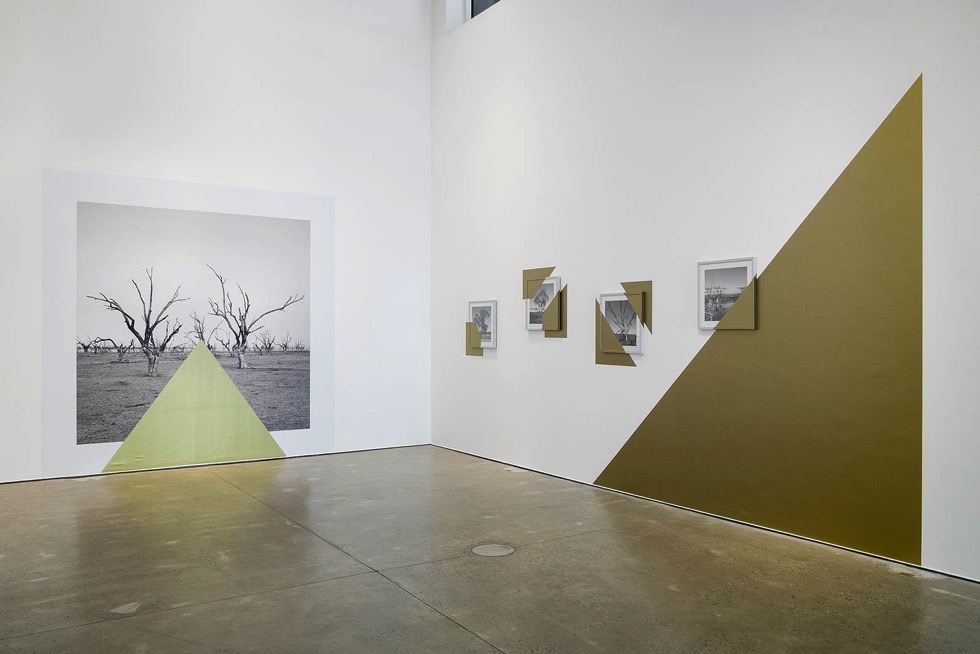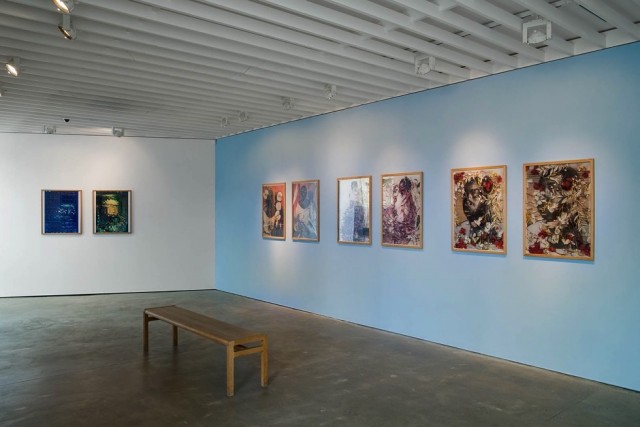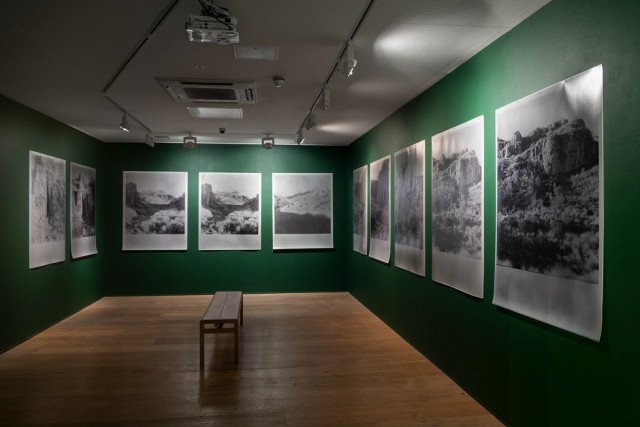Whose Land Is It? Reviewed

At Open Eye Gallery, Jasmine Gray finds three Australian artists scrutinising the long-lasting impacts of human greed…
It’s 31 degrees in Liverpool the day I visit Open Eye Gallery. I enter uncomfortably sunburnt; the intensity of the sun is a reminder of how the world is changing. Years of our mistreatment has caused cataclysmic and devastating changes to our landscape. The Earth is perishing.
I use the phrase ‘our mistreatment’ loosely here – we know, of course, the accelerating abuse is a direct result of colonialism, industrialisation and capitalism. We know that Indigenous people had, and still have, a starkly different relationship to the land than its invaders. We know that where we allow profit to rule over people, it also rules over land, and destruction becomes a neglected, even expected, after-thought.
I knew all this going into Open Eye’s current exhibition of photography, Whose Land Is it?, but my wilful Western ignorance meant I could know this whilst being able to avoid absorbing the implications. Thinking about the apocalyptic images of Australia’s 2019 Black Summer bushfires, there is still a removal of experience – it is happening, but it’s happening elsewhere.
James Tylor’s black and white photoset Economics of Water, 2018 (pictured, top), is a slap in the face to this mode of thinking. Of the Barka Darling River of south-eastern Australia, the photos are interspersed with large gold, geometric triangles which conceal parts of each image. To say that the shapes feel like imposters is an understatement. It is cruel; this gold exuberance takes over a backdrop of what is a devastated and empty landscape. They act as a crass marker of the economics of the title – monetary profit, gold, does not belong here.

Behind the shapes, trees bend back on themselves, weak and fleshless. I want to write that Tylor’s photographs are the graveyard of the land but I think the truth is even more shattering – this feels like land decomposing, rotting, without the dignity of being set to rest. Aboriginal communities once flourished here, amongst a river abundant with life, but now it is unimaginable that water was ever flowing. When I think of landscape, I think of abundance, not the ruinous aftermath of vampiric industrialisation presented. The photos are haunted by what once was.
If Tylor’s photographs are a documentation of the present day, and future, Atong Atem’s Monstera Obliqua 2021 & Photo Weavings 2021 (above) is a catalogue of the not-so-distant past. The dusty warmth of the red leaves and dried pampas grass collaged over portraits align with what I’d expect from an Australian landscape. It is electric with conversation. Nature is layered over sitters, who peek out between the leaves – the land acts as both comforter and protector. In one, Atem has placed a flower next to the sitter’s face; a private exchange between woman and nature. At no point is there a domination of any kind. The human, digital and natural world overlap so that Atem’s souvenirs highlight purpose – land as a marking of time, land as a keeper of memory.

It’s significant to note that all of her sitters are black. The invasion of Australia in the late 1700’s, brought white colonizers forcing an introduction to new farming methods and a violent displacement of Aboriginal communities, causing devastating and long-lasting environmental impacts. As Tylor’s work presents a dystopian reality, Atem offers space for a resolution – an ode to patience and reflection, to creating space for discourse. An ode, also, to the joy in preservation.
With the heat of the day at my back, I enter the final gallery. A dark green room, cool and shadowed, it is the perfect curation for a project focussed on caves. Amanda Williams’ Nichols Gorge Walk, Kosciuszko National Park, 2021 (above) uses variations of fogged paper, where the quality of the sheet is impacted due to a deterioration of some kind, to photograph landmarks with harmonious reflection. William’s technique offers a duty of care – it is a sensitive and delicate selection, with some photos appearing twice, symbolising the passage of time. The series is alive with respect and admiration for what is captured. The most powerful moments come from facing the cave entrances. I’m struck by the brutishness and age of the rock – weathered by time, they remind me of the folds of my grandmother’s skin. Undeniably yonic, I’m overwhelmed by a surge of emotion at the inheritance these amazing landmarks carry. It feels like an opportunity for rebirth; a chance for hope.
As I leave, I notice something I missed on one of Tylor’s photographs earlier – what appears to be a nest in the branches of a tree. The resilience of nature, hoping, despite everything, to begin again.
Each photographer featured in Whose Land Is it? responds to the idea of truth – something that vibrates throughout the exhibition. We are entangled in our landscapes. We cannot allow the carrier of our stories, histories and inheritance to continue being abused for profit. It is time for conversation – and reparations. The answer to whose land is it seems simpler now, than ever – to the communities who care for it, the communities it was stolen from.
Jasmine Gray is the winner of the inaugural First Light Writer’s Prize 2021
See Whose Land Is It? At Open Eye Gallery, Liverpool, until 19 September 2021. Open Wednesday to Sunday 11am-4pm, FREE
Image credits, top to bottom: The Economics of Water by James Tylor; Monstera Obliqua and the work on the adjoining wall is Photo Weavings by Atong Atem; Nichols Gorge Walking Track, Kosciuszko National Park by Amanda Williams. All photography by Roger Sinek.





